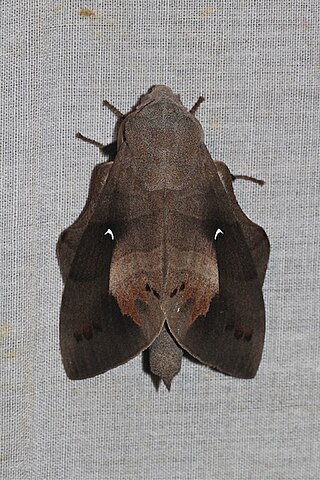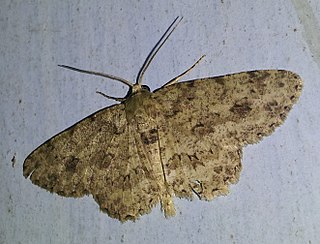
The bay leaf is an aromatic leaf commonly used as an herb in cooking. It can be used whole, either dried or fresh, in which case it is removed from the dish before consumption, or less commonly used in ground form. The flavor that a bay leaf imparts to a dish has not been universally agreed upon, but most agree it is a subtle addition.

Caterpillars are the larval stage of members of the order Lepidoptera.

Firs are evergreen coniferous trees belonging to the genus Abies in the family Pinaceae. There are approximately 48–65 extant species, found on mountains throughout much of North and Central America, Europe, Asia, and North Africa. The genus is most closely related to Cedrus (cedar)The genus name is derived from the Latin "to rise" in reference to the height of its species. The common English name originates with the Old Norse, fyri, or the Old Danish, fyr.

Camellia sinensis is a species of evergreen shrub or small tree in the flowering plant family Theaceae. Its leaves, leaf buds, and stems can be used to produce tea. Common names include tea plant, tea shrub, and tea tree.

The codling moth is a member of the Lepidopteran family Tortricidae. They are major pests to agricultural crops, mainly fruits such as apples and pears, and a codling moth larva is often called an "apple worm". Because the larvae are not able to feed on leaves, they are highly dependent on fruits as a food source and thus have a significant impact on crops. The caterpillars bore into fruit and stop it from growing, which leads to premature ripening. Various means of control, including chemical, biological, and preventive, have been implemented. This moth has a widespread distribution, being found on six continents. Adaptive behavior such as diapause and multiple generations per breeding season have allowed this moth to persist even during years of bad climatic conditions.

Pyrrharctia isabella, the Isabella tiger moth, whose larval form is called the banded woolly bear, woolly bear, or woolly worm, occurs in the United States and southern Canada. It was first formally named by James Edward Smith in 1797.

Tea seed oil is an edible plant oil. It is obtained from the seeds of Camellia oleifera.

Camellia petelotii is a species of plant in the family Theaceae. It is found in China and Vietnam. It may be called the golden camellia and synonyms include C. chrysantha and Camellia nitidissima. The golden camellia originated 170 million years ago, it is a first-class nationally protected plant in China. The golden camellia is extremely demanding on the growth environment, and its genes are extremely difficult to replicate, once transplanted, it will die or genetically mutate. Therefore, in 1986, the Golden Camellia National Nature Reserve was built in Fangcheng, Guangxi, with a total area of 9195.1 hectares.

Pyralis farinalis, the meal moth, is a cosmopolitan moth of the family Pyralidae. Its larvae (caterpillars) are pests of certain stored foods, namely milled plant products.

Lebeda is a genus of moths in the family Lasiocampidae. The genus was erected by Francis Walker in 1855.

Gongcheng Yao Autonomous County is a county within the prefecture-level city of Guilin, Guangxi, China. The county spans a total area of 2,149 km2 (830 sq mi), and has a population of approximately 300,000 as of 2011.

Zygaena lonicerae, the narrow-bordered five-spot burnet, is a moth of the family Zygaenidae. The species was first described by Theodor Gottlieb von Scheven in 1777.

Parasa lepida, the nettle caterpillar or blue-striped nettle grub, is a moth of the family Limacodidae that was described by Pieter Cramer in 1799. It is a native minor pest found in the Indo-Malayan region, including India, Sri Lanka, Vietnam, Malaysia and Indonesia. It is an introduced pest to urban trees in western Japan.

Biston suppressaria, the tea looper, is a moth of the family Geometridae. It is found in China, India, Myanmar, Nepal, and Sri Lanka.

Homona coffearia, the tea tortrix or camellia tortrix, is a moth of the family Tortricidae. The species was first described by Nietner in 1861. It is widely distributed in the Oriental region.
Pingasa nobilis is a moth of the family Geometridae first described by Louis Beethoven Prout in 1913. It is found in New Guinea and Queensland, Australia.

Mo or Moism is the religion of most Zhuang people, the largest ethnic minority of China. It has a large presence in Guangxi. While it has a supreme god, the creator Bu Luotuo (布洛陀), numerous other deities are venerated as well. It has a three-element-theory. Mo is animistic, teaching that spirits are present in everything.

Ectropis bhurmitra, the tea twig caterpillar, is a moth of the family Geometridae. The species was first described by Francis Walker in 1860. A widespread Asian species, it is found around Indo-Australian tropics from India, Sri Lanka and Hong Kong, Taiwan, Thailand, New Guinea to Australian Queensland and the Solomon Islands.

















